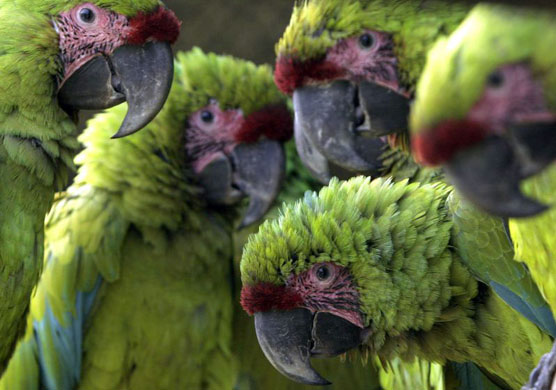TOP STORIES
The Northern Echo - www.northernecho.co.uk
3 Oct 2008
A Douglas
RED squirrels in the North could be at an increased risk of catching a deadly virus from their grey cousins at this time of year, the Wildlife Trusts warned today. The Trusts are urging people to report sightings of reds during Squirrel week, which starts tomorrow, to help them keep track of the threatened population. The red squirrel is restricted in England to a few pockets, including in Northumberland, North Yorkshire, Cumbria and on the islands of Anglesey, the Isle of Wight and Brownsea, Poole Harbour.
County to place dumpsters around lake for dead carp
Lake County Record-Bee - www.record-bee.com
30 Sep 2008
T Knight
Location: Lake County, California, USA - Map It

Theories abound about the cause of the recent carp die-off around Clear Lake. They range from herbicide poisoning, a fish virus, and decaying weeds that use up oxygen in the water. A number of fishermen are concerned that other fish such as bass, crappie and catfish will also die. The cause of the die-off remains unknown and the number of carp affected is also unknown. Best estimates run from a 1,000-10,000, possibly more. The dead carp have been washing up on beaches all around the lake.
 Tiny Plastic Bits Pose Marine Hazard
Tiny Plastic Bits Pose Marine HazardDiscovery News - dsc.discovery.com
2 Oct 2008
J Marshall
Photo courtesy of Getty Images
We've all heard about sea turtles, dolphins or seabirds dying from entanglement in six-pack rings, plastic bags or other detritus -- or from bellies full of mistakenly swallowed plastic. But some marine researchers are concerned about the effect that much smaller bits of plastic may be having on the seas. So-called "microplastics" may concentrate pollutants, be ingestible by the ocean's tiny denizens -- from zooplankton to filter feeders like clams and mussels -- and move up the food chain.
DNA-based Vaccine Shows Promise Against Avian Flu
ScienceDaily - www.sciencedaily.com
2 Oct 2008
Though it has fallen from the headlines, a global pandemic caused by bird flu still has the United States’ Centers for Disease Control and Prevention on high alert. Yet, to date, the only vaccines that have proven even semi-effective are produced in chicken eggs, take five to six months to prepare and act against a single variant of the H5N1 virus, which mutates incredibly quickly. Now, new research by scientists in New York and Taiwan has led to a vaccine with the potential to stop most strains of H5N1 flu viruses in their tracks.
Rabies in a Dog Imported from Iraq -- New Jersey, June 2008
Center for Disease Control - www.cdc.gov
3 Oct 2008
. . . On June 18, 2008, a mixed-breed dog, recently shipped from Iraq into the United States, was confirmed to have rabies by the Public Health and Environmental Laboratories of the New Jersey Department of Health and Senior Services. A total of 24 additional animals in the shipment, all potentially exposed to the rabid dog, were distributed to 16 states.
LAST WEEK'S TOP READ LINKS
- Disease response bill moves forward
- Emerging Infectious Diseases - October 2008 Issue
- Hundreds of dead birds found outside high school
- Emerging Animal Diseases and International Trade
- FWC warns hunters to be careful when handing wild hogs
- Is there more to prion protein than mad cow disease?
- City Bears Get Fat, Die Young
- Reported Wildlife Mortality Events to the USGS National Wildlife Health Center
- Man fined for moving bait from VHS-positive waters
- Painted Dog population falls 99%, but community efforts could save species
OTHER WILDLIFE HEALTH RELATED NEWS

Photo courtesy of The Week in Wildlife - guardian.co.uk





No comments:
Post a Comment